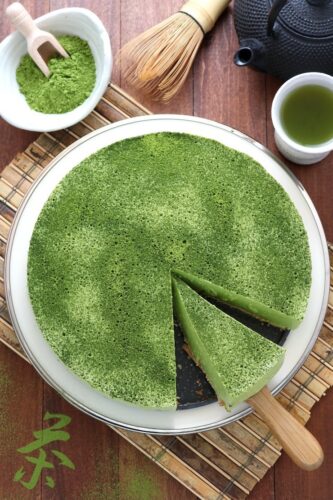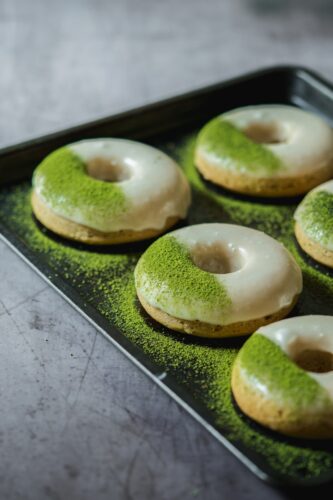
When using green tea in baking, it can be in the form of leaves or powder. While tea leaves require brewing and filtering before use, matcha powder offers a more versatile option, usable both dry and in liquid form. However, for those unfamiliar with the intricacies of using powdered matcha to decorate pastries, achieving a flawless finish can be challenging.
One common issue is that when matcha powder is sprinkled on desserts, it may seep into the cake over time, as the powder absorbs moisture and loses its vibrant green color. This is a normal occurrence, but it can be avoided with some careful techniques.


To ensure the matcha powder stays vibrant and does not seep into the dessert, it is best to sprinkle it just before serving, or shortly before consumption. Additionally, placing the cake in the refrigerator for about two hours—without covering it—will allow the surface to dry, making the matcha powder adhere more effectively without melting or absorbing moisture.
For those looking to create decorative patterns with matcha powder, a useful trick is to place paper on the cake to prevent direct contact, then quickly sift the matcha powder through a fine sieve along the intended pattern. This method ensures a neat, precise finish.
If you find the matcha powder still tends to seep in, consider mixing it with a small amount of icing sugar. Icing sugar contains cornstarch, which helps reduce moisture absorption. Alternatively, you can use matcha powder specifically designed for decoration, which is available at specialty Japanese dessert shops but comes at a higher price.
For those without icing sugar, grinding regular sugar to a fine consistency and mixing it with about 3% cornstarch can create a suitable substitute.
It’s also important to consider the quality of the matcha powder. A high-quality matcha will be a vibrant, deep green with a sweet, delicate flavor. In contrast, lower-grade matcha tends to be more bitter and astringent and often appears paler in color due to exposure to sunlight. Those with an eye for quality will immediately recognize the grade of the matcha based on the dessert’s appearance.
To add value to your desserts, consider sharing the origin of your premium matcha powder with customers. Highlighting the use of high-grade matcha will not only enhance the perceived value of your creations but will also educate customers on the difference between quality matcha and artificially colored powders.
Ultimately, choosing the right matcha powder for both its visual appeal and flavor profile is essential in elevating your dessert and ensuring a memorable dining experience.

Sources:
Tastykitchen.com
http://cookingwithjapanesegreentea.blogspot.com/
